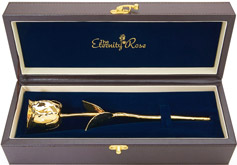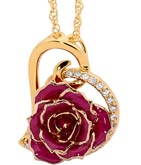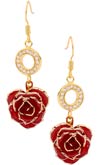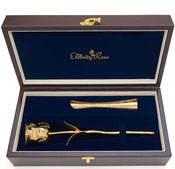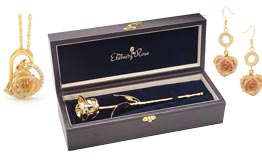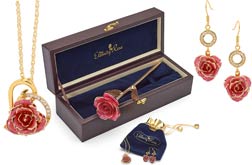White gold and rose gold comprise different gold alloys. They are each simply gold with other various metals added to them to change their color.
In the first instance, the purity of gold is measured in karats. One karat is equal to 1/24 gold. 9 karat gold therefore comprises 9/24 (37.5%) gold, while 18 karat gold comprises 18/24 (75%) gold. By definition therefore, 100% pure gold is 24 karat gold.
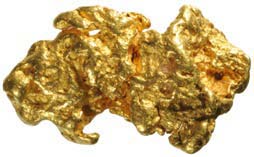 Palladium or nickel when mixed with gold creates 18k white gold. 9k white gold usually contains 62.5% silver.9k white gold appears ‘whiter’ than 18k or 14k white gold, because more gold (which is yellow) is contained in 14k and 18k white gold. Therefore it is not uncommon for one to see a 14k or 18k white gold product as displaying more tinges of yellow than 9k white gold.
Palladium or nickel when mixed with gold creates 18k white gold. 9k white gold usually contains 62.5% silver.9k white gold appears ‘whiter’ than 18k or 14k white gold, because more gold (which is yellow) is contained in 14k and 18k white gold. Therefore it is not uncommon for one to see a 14k or 18k white gold product as displaying more tinges of yellow than 9k white gold.
Rose gold is created by mixing gold with copper, since copper is reddish in color. Rose gold can also differ a lot in color, which depends on the amount of copper that is mixed with the gold. The higher the content of copper, the more reddish the finished product is.
Due to the fact that both white gold and rose gold must have gold that is combined with other various metals to achieve their respective colors, it is impossible to achieve 100% white gold or rose gold.
Properties of gold vary depending on the types of metals and quantities that are added to the mixture, which are designed for different purposes. For example, when nickel is mixed with gold, it becomes very hard which makes it ideal for making brooch pins and rings. If softer metals like palladium are mixed with gold, this is ideal when a more pliable gold alloy is required.
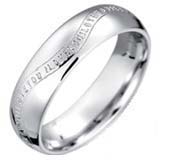
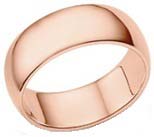
Some unusual gold alloys contain indium, aluminium and cadmium, which produce blue, purple and green gold respectively. Despite the fact that these are rare, they actually exist. There is also red gold which is customary in the Middle East region. This is a gold alloy containing a very high copper content.









